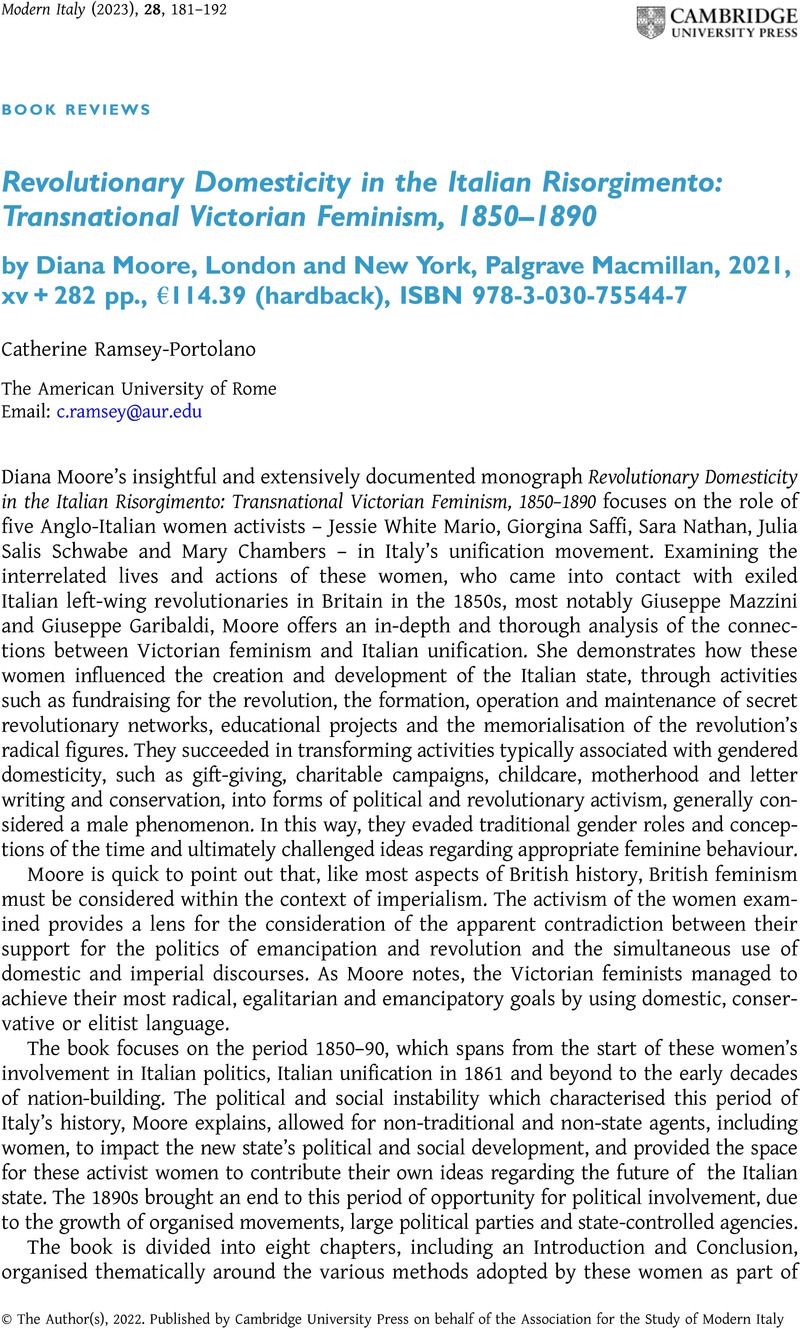No CrossRef data available.
Article contents
Revolutionary Domesticity in the Italian Risorgimento: Transnational Victorian Feminism, 1850–1890 by Diana Moore, London and New York, Palgrave Macmillan, 2021, xv + 282 pp., €114.39 (hardback), ISBN 978-3-030-75544-7
Review products
Published online by Cambridge University Press: 10 October 2022
Abstract

- Type
- Book Review
- Information
- Copyright
- Copyright © The Author(s), 2022. Published by Cambridge University Press on behalf of the Association for the Study of Modern Italy


